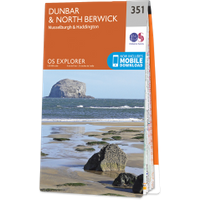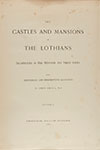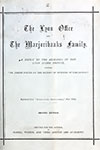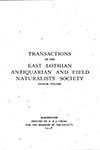

Leuchie House is an 18th century mansion however it incorporates the remains of an older castle including a vaulted basement.
The history of the estate goes back to the 12th century when it belonged to the MacDuff Earls of Fife who had a castle on the coast at North Berwick. Around 1150 Duncan or Donnchad, Earl of Fife, founded a Cistercian nunnery on the western edge of the burgh of North Berwick.
When the last MacDuff Earl of Fife, Duncan IV, died in 1353 without a male heir he was succeeded by his only daughter, Isabella, as Countess of Fife. She married four times with each of her husbands living for only a few years beyond their respective unions and with no children produced. In 1371 she was persuaded to resign the Earldom of Fife to Robert Stewart, Earl of Menteith, the brother of her late second husband, Walter Stewart, the second son of the future Robert II.
During the reign of Robert II Leuchie passed to the Douglas family who had become powerful in the area, William Douglas, 1st Earl of Douglas, having built Tantallon Castle. When James Douglas, 9th Earl of Douglas, rebelled against James II in 1455 he was attainted and his estates and titles forfeited to the Crown.
While the majority of the Douglas estates and titles were restored to Archibald Douglas, 5th Earl of Angus, in 1479, Leuchie doesn’t seem to have been included, apparently having become part of the Elphinstone lands in 1455.
In 1435 Alexander de Elphinstone died at the Battle of Piperdean, leaving an infant daughter, Agnes. Alexander’s younger brother, Henry, took over the family’s estates but when Agnes came of age he refused to hand over his niece’s rightful inheritance. After many years of legal proceedings the dispute was finally settled by arbitration in 1476 when Henry received the family’s Airth estates in Stirlingshire and Agnes received Elphinstone, Leuchie and Nether Malgask in Fife.
Agnes married Sir Gilbert Johnstone, the second son of Adam Johnstone of Johnstone, and Leuchie passed into the Johnstone, Johnston or Johnstoun family. Their eldest son, Adam, had succeeded to the estates by 1497 and he was in turn succeeded by his son, Gilbert. Gilbert was however killed at the Battle of Flodden in 1513 and in 1514 his brother, Andrew, was returned heir to Leuchie. Andrew succeeded to the rest of the family’s lands some time between 1532 and 1534, and on the 31st of October 1534 sold half of the lands of Leuchie to Sir Robert Lauder of the Bass.
Andrew was dead by 1561 and was succeeded by his eldest son, James, who would achieve some notoriety as one of the conspirators involved in the murder of Rizzio. Leuchie seems to have been granted periodically to younger sons of the family before returning to the head of the house, and in 1575 James gave Leuchie to his son, Robert.
Leuchie doesn’t seem to be marked on Hondius’ map of 1630 or on Blaeu’s mid-17th century map of the Lothians.
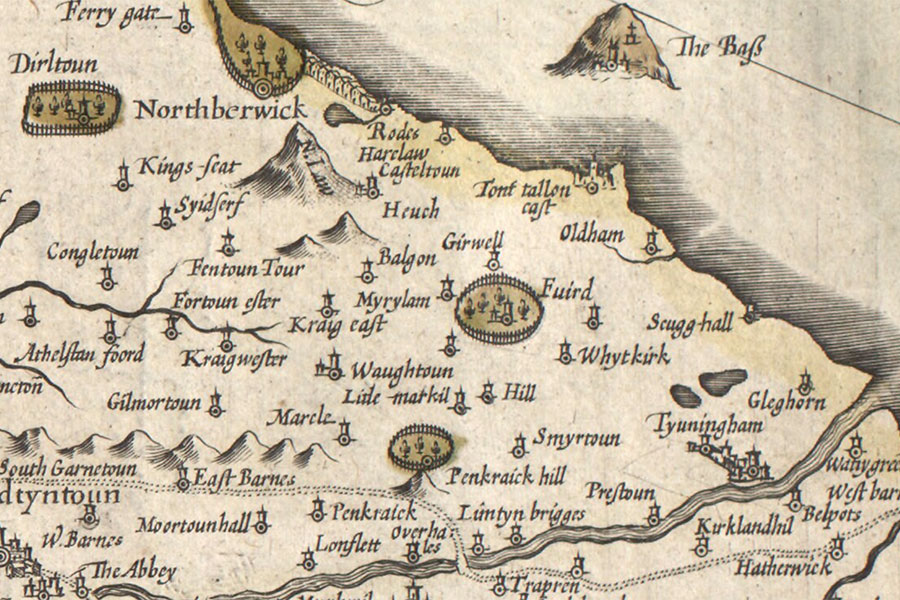
Hendrik Hondius, Amsterdam, 1630map image courtesy of NLS
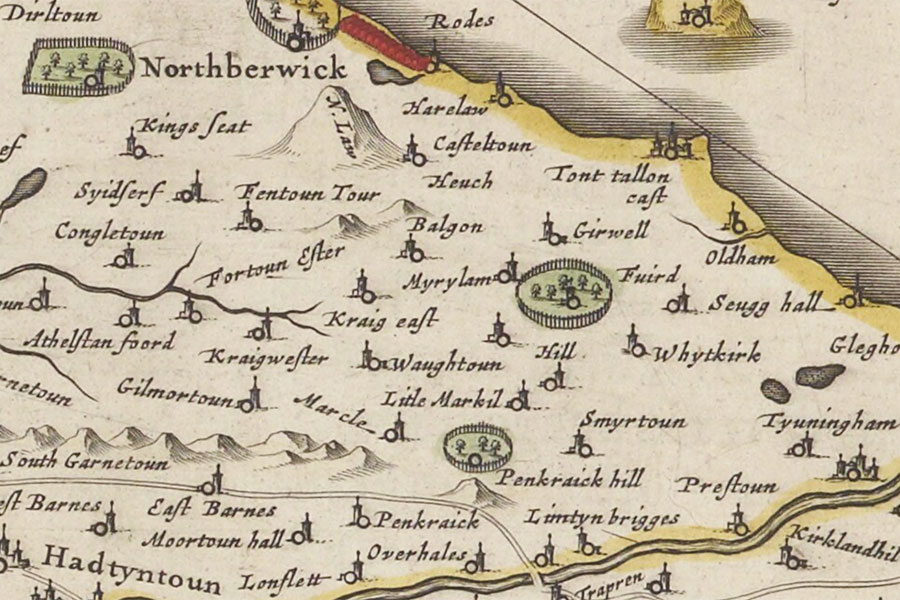
Joan Blaeu, Amsterdam, 1654map image courtesy of NLS
Leuchie seems to have remained in the Johnstone family for almost a century more but when Sir James Johnstone, 3rd Baronet of Elphinstone, succeeded his father, Sir John, in 1664 he inherited a bankrupt estate. In 1666 Sir James sold the estates to his brother-in-law, Sir Archibald Primrose of Carrington, to settle his debts. It’s not clear if Leuchie was included in this since Sir James was returned as heir to his father in Leuchie on the 2nd of June 1673, and Leuchie is supposed to have passed into the Marjoribanks family in the same year.
The Marjoribanks of Leuchie story apparently runs parallel for some time to that of the Johnstone of Leuchie family, with Marjoribanks of Leuchie seemingly on record earlier in the 17th century. Another source refers to a John Marjoribanks having acquired Leuchie in 1653. I haven’t been able to ascertain the exact connection or timeline however there I did uncover a hint of a familial link between the two families involving the Sympson family.
When a James Johnstone, apparently one of the Elphinstone family and a burgess in Edinburgh, died in 1597 he left money for his wife’s grandchildren, Marion and Christian Marjoribanks, and instructions that his son, John Johnstone, should “be trained by Jospeh Marjoribanks in the trade of merchandise.” Johnstone’s wife, Marion Laurie, was a widow when he married her and if she had some Marjoribanks connection then this may account for Leuchie’s passage into the Marjoribanks family. Although her maiden name was apparently Sympson it isn’t clear if Laurie is a surname and she may have married a Marjoribanks.
The aforementioned Jospeh Marjoribanks was married to a Marion Sympson and died in 1636. Their son, John Marjoribanks of Leuchie, married Elizabeth, daughter of John Trotter of Mortonhall, in 1641 and it is he who according to one version acquired Leuchie in 1653. Their son, also named John Marjoribanks of Leuchie, registered the arms of Marjoribanks of Leuchie with the new Lyon Register in 1673.
However Leuchie came to be in the Marjoribanks family, they seem to have owned it for the next quarter of a century with no further mention of the Johnstones. Leuchie is marked with a tower symbol on Adair’s map of East Lothian from 1682.

John Adair, 1682map image courtesy of NLS
In 1698 John Marjoribanks of Leuchie was a Commissioner of Supply for the shire of Haddington and in 1699 or 1700 he sold Leuchie to Sir Hew Dalrymple, Lord North Berwick, Lord President of the Court of Session, who already owned land in the area. These lands along with his new acquisition were erected into the barony of North Berwick which covered some 3000 acres. Sir Hew had been created a baronet in the baronetcy of Nova Scotia in 1698 and had bought the barony and castle of Tantallon from James Douglas, 2nd Marquess of Douglas, in 1699.
Sir Hew was the third son of James Dalrymple, 1st Viscount of Stair, the younger brother of John Dalrymple, 1st Earl of Stair, Sir James Dalrymple of Cranstoun and the elder brother of Sir David Dalrymple of Hailes.
His son, Sir Robert, predeceased him in 1734 and he was succeeded upon his death in 1737 by his
grandson Sir Hew Dalrymple, 2nd Bt. The younger Sir Hew went on a Grand Tour in Europe from 1739 to 1740 and was later Member of Parliament for Haddington Burghs between 1742 and 1747, for Haddingtonshire between 1747 and 1761 and again for Haddington Burghs between 1761 and 1768.
The family split their time between Leuchie and The Lodge in North Berwick, with Leuchie being used as a country retreat. Roy’s mid-18th century map shows formal gardens laid out on a grid pattern around the house.

William Roy, 1747-1755map image courtesy of NLS
In 1753 Sir Hew apparently contemplated remodelling the old house with the help of an architect referred to only as Mr Peacock. It has been speculated that this could either be Alexander Peacock of Edinburgh or James Peacock of London, however the plans weren’t realised and the south wall of the house was described as being “in a tottering condition” at this time.
Sir Hew finally commissioned a new house in 1779 although the architect is not known. Consisting of a three storey rectangular block aligned approximately east to west, and incorporating the vaulted basement of the old tower, it featured bow-fronted east and west ends. On the south elevation a three bay angled bow was added in the centre of the façade with a further bay on either side. A carved armorial tablet was installed above the centre bay in a balustrade running around the roof’s edge.
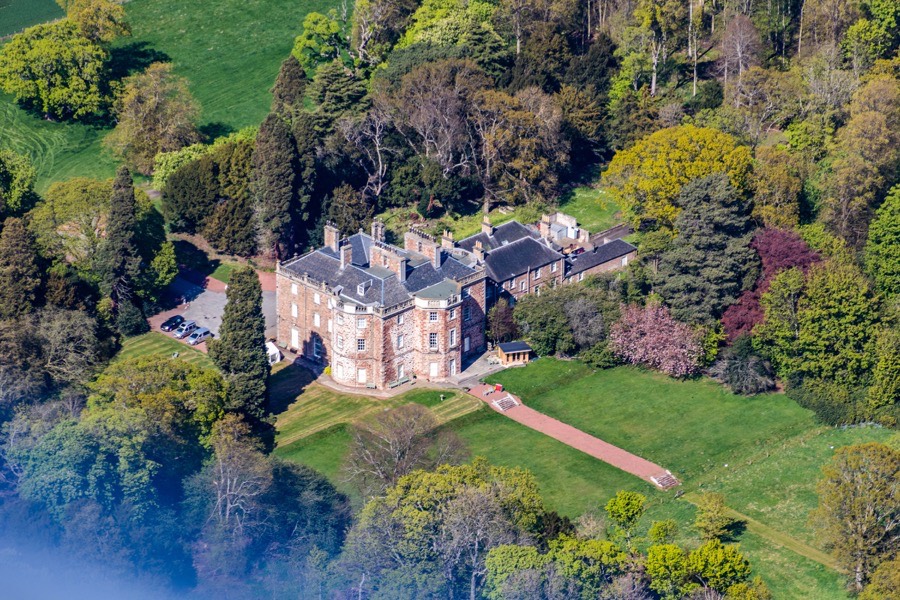
The extensive remodelling work was completed in 1785 but Sir Hew died just five years later in 1790 and was succeeded by his son, Sir Hew, 3rd Bt., who had been the Member of Parliament for Haddingtonshire between 1780 and 1786. When the 3rd Baronet’s uncle, John Hamilton, died childless in 1796 Sir Hew changed his surname to Hamilton-Dalrymple and inherited Bargany in Ayrshire which became the principal family home.
Sir Hew Hamilton-Dalrymple, 4th Bt., succeeded in 1800 and in the same year married Jane Duncan, daughter of Adam Duncan, Viscount Duncan of Camperdown. Between 1800 and 1804 John Claudius Loudon was commissioned to redesign the estate, with the landscape made less formal while incorporating earlier avenues of trees, and extensive planting carried out.

In 1808 plans for remodelling drawn up by David Hamilton were not realised and neither were alterations proposed by William Burn in 1825. The 4th Baronet’s only child was a daughter, Henrietta, and upon his death in 1834 Bargany passed to her but Leuchie and the baronetcy passed to his younger brother, John. However Sir John only lived for another year and was succeeded in 1835 by his son, Sir Hew, 5th Bt.
Sir Hew was responsible for substantially enlarging the house, almost doubling its size and making it asymmetrical, in work which was probably carried out in 1859. The main extension was to the north with the addition of a four bay wing with the main entrance in its westernmost bay framed by a porch with pediment supported on Doric columns. This new wing added three further bays to the north of the eastern and western façades.
The interior was also dramatically remodelled, with Adam-style plaster ceilings by James Nisbet of Edinburgh and grand detailing throughout. The stone flagged floor in the hallway is said to have been retained from the original house despite being in the new extension, as is the cantilevered stone staircase.
Projecting east from the north end of the east façade is a low three storey wing extension which seems unlikely to be contemporary with the aforementioned work. Extending further east from this is a long two storey seven bay wing which also seems to have been built a later date.
In 1887 Sir Hew died and following his widow’s death the family chose to reside at The Lodge and Leuchie was let out. Around 1922 the estate was reduced in size when some of the land was sold off. In 1939 Sir Hew, 9th Bt, moved back to Leuchie and lived there until his death 20 years later.
During World War II the woodlands to the north of the house were cut down for timber, with only three of the main avenue of trees left standing, and the north parks ploughed for agriculture. In 1959 the 10th Baronet, Sir Hew Hamilton-Dalrymple, inherited from his father and leased Leuchie House, for a peppercorn rent, to the teaching order of La Sagesse nuns for the training of new nuns. The following year he commissioned a new family home from Law & Dunbar-Nasmith, which was built in 1962 inside the east wall of the walled garden and incorporated the original gardener’s cottage. This house was subsequently extended in 1964.
By 1970 the number of nuns was diminishing and Sir Hew helped the founder of the MS Society, Sir Richard Cave, to create the Richard Cave Multiple Sclerosis Holiday Home which was run by the Sisters of the Order of Servites. In 1998 the MS Society took over Leuchie as a respite centre, running it directly until 2010. Following a funding campaign an independent charity was set up to run the main house as a care home providing specialist respite breaks for people affected by long-term conditions.
Alternative names for Leuchie House
Leuchie; Luchie; Luchy; North Berwick House


